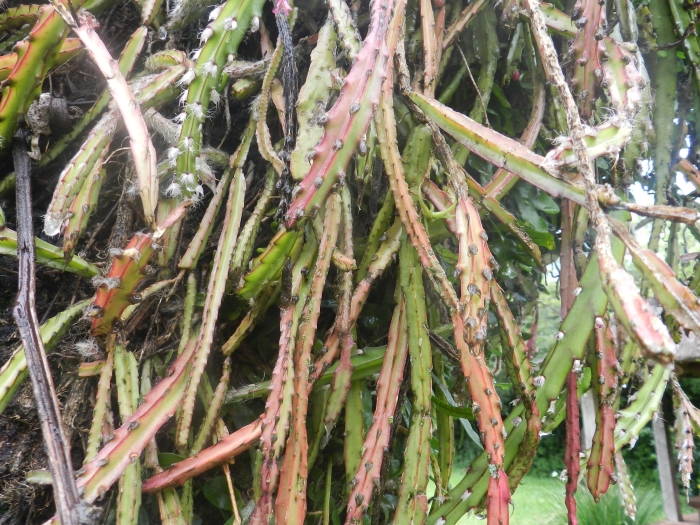Cruciform Cactus
(Lepismium cruciforme)
Cruciform Cactus (Lepismium cruciforme)
/
/

Leonel Roget
CC BY 4.0
Image By:
Leonel Roget
Recorded By:
Copyright:
CC BY 4.0
Copyright Notice:
Photo by: Leonel Roget | License Type: CC BY 4.0 | License URL: http://creativecommons.org/licenses/by/4.0/ | Rights Holder: Leonel Roget | Publisher: iNaturalist | Date Created: 2012-12-04T14:36:25-08:00 |

























Estimated Native Range
Summary
Lepismium cruciforme, commonly known as Cruciform Cactus, is an epiphytic cactus native to the Atlantic Forest biome in South America, specifically in regions of Argentina, Brazil, and Paraguay. It is typically found in subtropical or tropical moist lowland forests, often growing on trees. This species can reach a length of up to 1 meter, with segmented, flattened stems that may have a slight reddish tinge under high light conditions. The small, bell-shaped flowers are white to pink and bloom sporadically throughout the year, with a peak in late spring to early summer. The flowers are not particularly showy but add a delicate charm to the plant.
Cruciform Cactus is valued for its unique, sprawling growth habit and is often grown in hanging baskets or mounted on bark to mimic its natural epiphytic state. It is relatively easy to maintain, requiring a humid environment and partial shade to replicate its native forest canopy conditions. Well-drained soil or orchid potting mix is essential to prevent root rot. In cultivation, it is important to avoid overwatering and to provide good air circulation. While it is not known for significant pest or disease issues, it can be susceptible to mealybugs and fungal infections if conditions are too damp. This cactus is not typically invasive when grown outside its native range, but it should be protected from frost.CC BY-SA 4.0
Cruciform Cactus is valued for its unique, sprawling growth habit and is often grown in hanging baskets or mounted on bark to mimic its natural epiphytic state. It is relatively easy to maintain, requiring a humid environment and partial shade to replicate its native forest canopy conditions. Well-drained soil or orchid potting mix is essential to prevent root rot. In cultivation, it is important to avoid overwatering and to provide good air circulation. While it is not known for significant pest or disease issues, it can be susceptible to mealybugs and fungal infections if conditions are too damp. This cactus is not typically invasive when grown outside its native range, but it should be protected from frost.CC BY-SA 4.0
Plant Description
- Plant Type: Succulent
- Height: 0.5-1 feet
- Width: 1-3.5 feet
- Growth Rate: Moderate
- Flower Color: Pink, Yellow
- Flowering Season: Spring, Winter
- Leaf Retention: Evergreen
Growth Requirements
- Sun: Full Sun, Part Shade
- Water: Medium
- Drainage: Fast, Medium
Common Uses
Low Maintenance, Potted Plant, Rock Garden
Natural Habitat
Native to the Atlantic Forest biome in South America, specifically in regions of Argentina, Brazil, and Paraguay, often as an epiphyte in subtropical or tropical moist lowland forests
Other Names
Common Names: Vining Cactus, Whortleberry Cactus, Coral Cactus, Button cactus
Scientific Names: , Lepismium cruciforme, Cactus cruciformis, Cereus cruciformis, Cereus elegans, Cereus knightii, Cereus knightii, Cereus myosurus, Cereus myosurus, Cereus myosurus var. tenuior
GBIF Accepted Name: